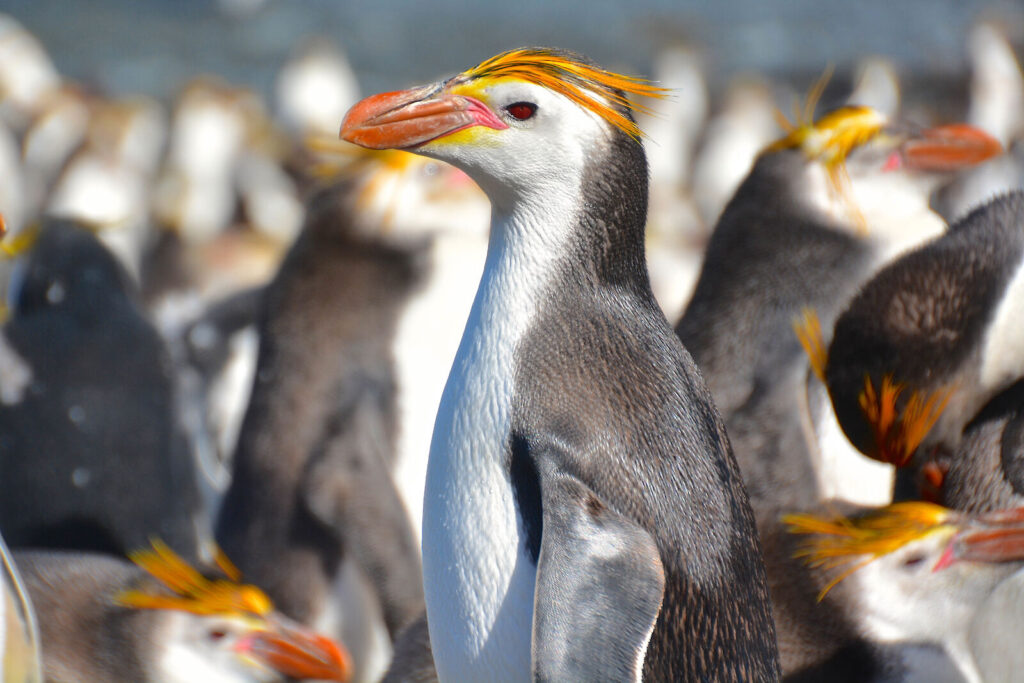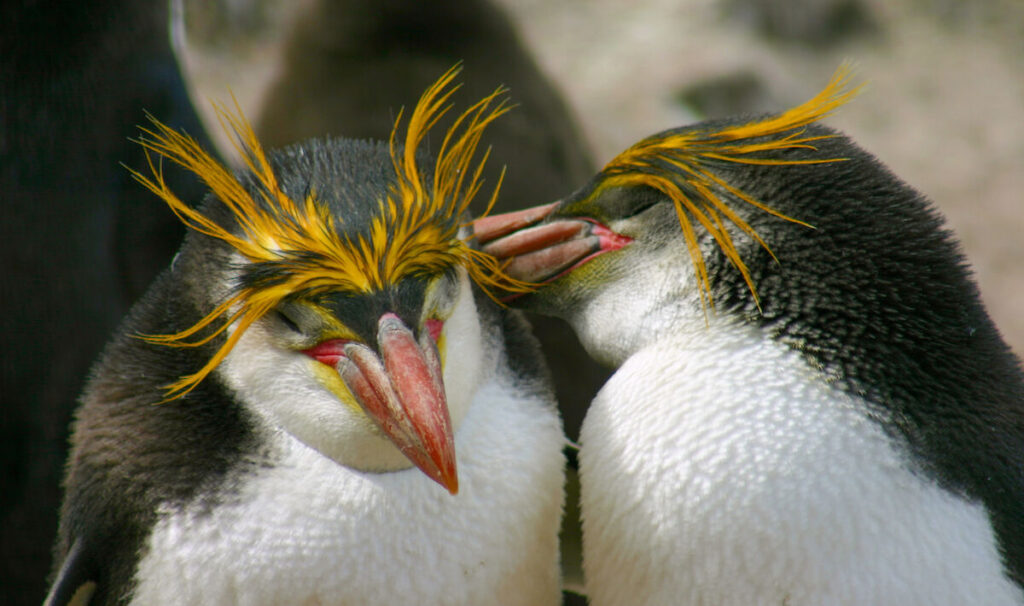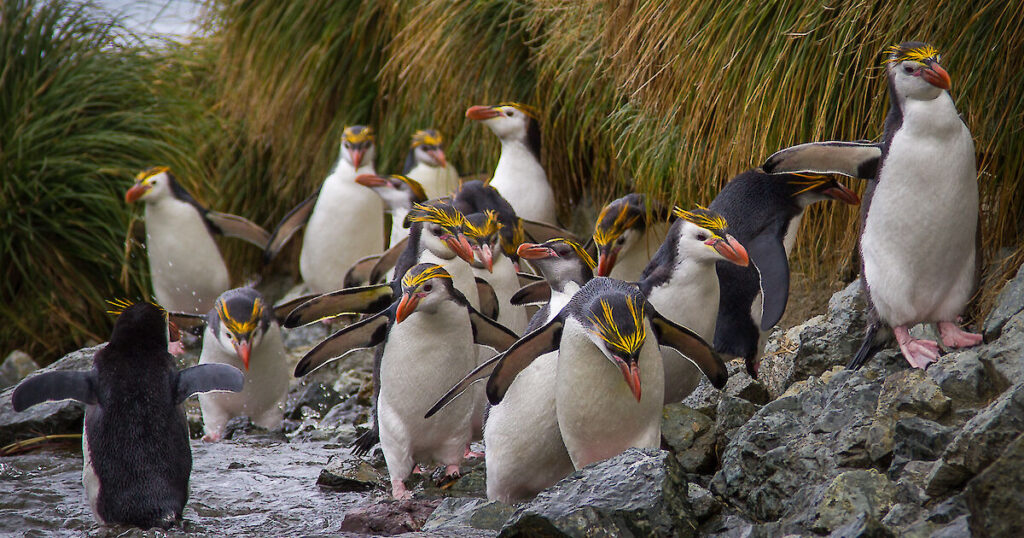The Royal Penguin (Eudyptes schlegeli) is a type of crested penguin that inhabits the sub-Antarctic Macquarie Island, located approximately 1,500 kilometers southeast of Tasmania. Known for their distinctive white faces and bright yellow crests, Royal Penguins are one of the rarest penguin species in the world and are classified as vulnerable by the International Union for Conservation of Nature (IUCN).

Physical Characteristics
Adult Royal Penguins are medium-sized, standing around 65 centimeters tall and weighing between 3.7 and 5.5 kilograms. They have a black head, upper back, and flippers, with a bright white chest and belly. The most notable feature of the Royal Penguin is its vibrant yellow crest, which extends from the forehead to the nape of the neck. Their crests become brighter and longer during the breeding season, making them a striking sight on Macquarie Island.
Habitat and Behavior
The Royal Penguin is endemic to Macquarie Island, a small island located in the Southern Ocean. Macquarie Island is a UNESCO World Heritage Site and is known for its rich biodiversity, including many unique bird species. Royal Penguins prefer to nest on steep slopes and cliffs, where they are protected from predators such as skuas and giant petrels.
During the breeding season, Royal Penguins form large colonies, with thousands of birds congregating together to mate and rear their young. The breeding season typically runs from September to December, during which time males will perform elaborate courtship rituals to attract a mate. Female penguins lay one or two eggs, which are incubated by both parents for around 40 days. Once hatched, the chicks are fed regurgitated fish by their parents until they are old enough to fend for themselves.
Threats to Survival
The Royal Penguin is considered vulnerable to extinction due to several threats to its habitat and population. The introduction of invasive species such as rats and cats to Macquarie Island has had a significant impact on penguin populations, as these predators prey on both adults and chicks. Climate change is also a significant concern, with rising sea temperatures causing declines in the populations of fish and krill, which are the primary food source for Royal Penguins.
Conservation Efforts
Several conservation efforts are underway to protect the Royal Penguin and its habitat. The Australian government, which administers Macquarie Island, has implemented a rat eradication program to eliminate invasive predators and protect penguin populations. Researchers are also studying the effects of climate change on the island’s ecosystems and developing strategies to mitigate its impacts.
In addition, the Royal Penguin is protected under the Australian Environment Protection and Biodiversity Conservation Act, which prohibits the hunting or harvesting of the species. The IUCN also lists the Royal Penguin as a priority species for conservation, highlighting the need for continued research and action to protect this unique and endangered species.
In conclusion, the Royal Penguin is a fascinating and unique species that plays an important role in the ecosystem of Macquarie Island. While the species faces significant threats to its survival, conservation efforts offer hope

